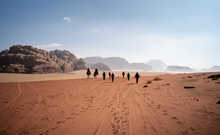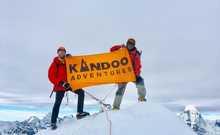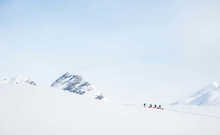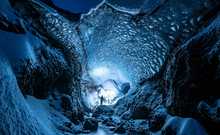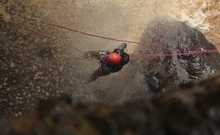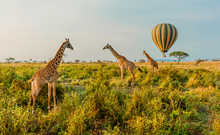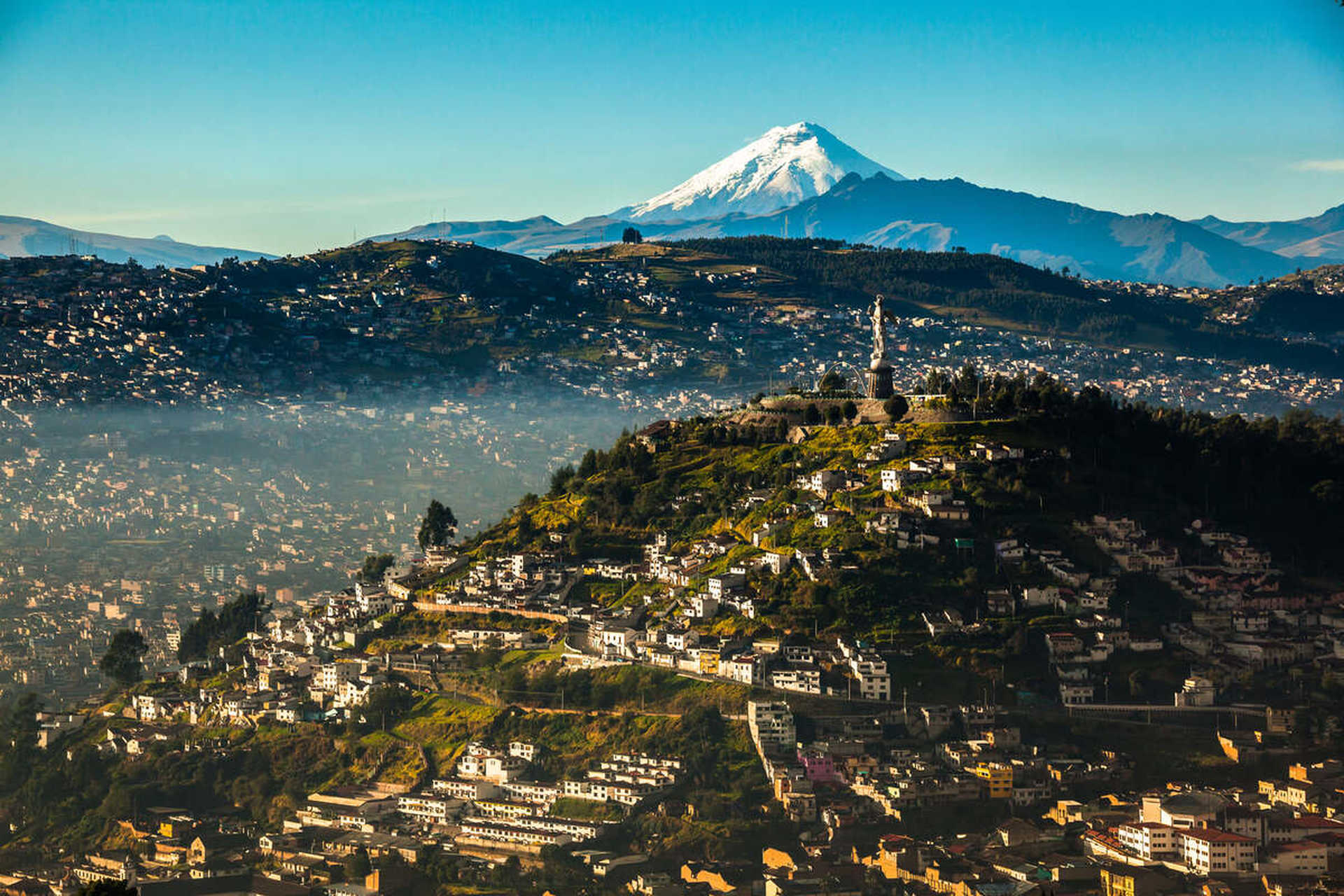Travelling to Ecuador
Ecuador offers adventure travellers a treasure trove of goodies. Because of its location on the equator, Ecuador has stunning and diverse landscapes - from the Amazon rainforest and Andean peaks to Pacific beaches and further off its coast, the famed Galápagos Islands. With nearly 20% of its land protected as national parks or reserves, Ecuador offers an immersion into the natural world that few people get to experience today.
Ecuador has a friendly culture and family-oriented spirit. With deep rooted traditions and a strong Catholic influence, visitors to this beautiful country can expect a warm welcome.
Our handy guide provides essential info and answers some of the most commonly asked questions for those investigating trips to Ecuador.
Where is Ecuador?
Located on the northwestern coast of South America, Ecuador borders the Pacific Ocean to the west, Colombia to the north and Peru to the east and south. The equator is its namesake, for the simple fact that it literally straddles it, with more of its land mass lying to the south. In terms of square mileage, Ecuador is roughly only 16% larger than the UK, making it the fourth smallest country in South America.
To fly to Ecuador from the UK, you’ll typically need a connection via Amsterdam or Madrid. Depending on your location, there are also more direct options to fly to Ecuador from North America or Canada.
Fun fact about Ecuador: Because the Earth bulges slightly at the equator (due to its rotation), Mount Chimborazo in Ecuador, though not the highest mountain above sea level, is the point on Earth farthest from the Earth’s centre and closest to outer space. It beats Mount Everest in that sense, even though Everest is higher relative to sea level!
What is the capital city of Ecuador?
The capital of Ecuador is Quito. Tucked into the Andes and standing at an elevation of 2,784m above sea level, it is the second-highest city in the world. Quito, officially known as San Francisco de Quito, is the political and cultural centre of Ecuador. While its full name reflects its colonial heritage, most people use the shorter, familiar name in everyday conversation. Despite Quito’s location in the Guayllabamba River Valley, the active Pichincha volcano (one of the many Ecuador volcanoes) can be observed towering majestically over the city. Quito is also the city closest to the equator in the world; in fact, the equator runs directly through the north of Quito, in the parish of San Antonio.
Fun fact about Ecuador: Quito and Kraków were the first cities to receive World Cultural Heritage Status, declared by UNESCO in 1978.
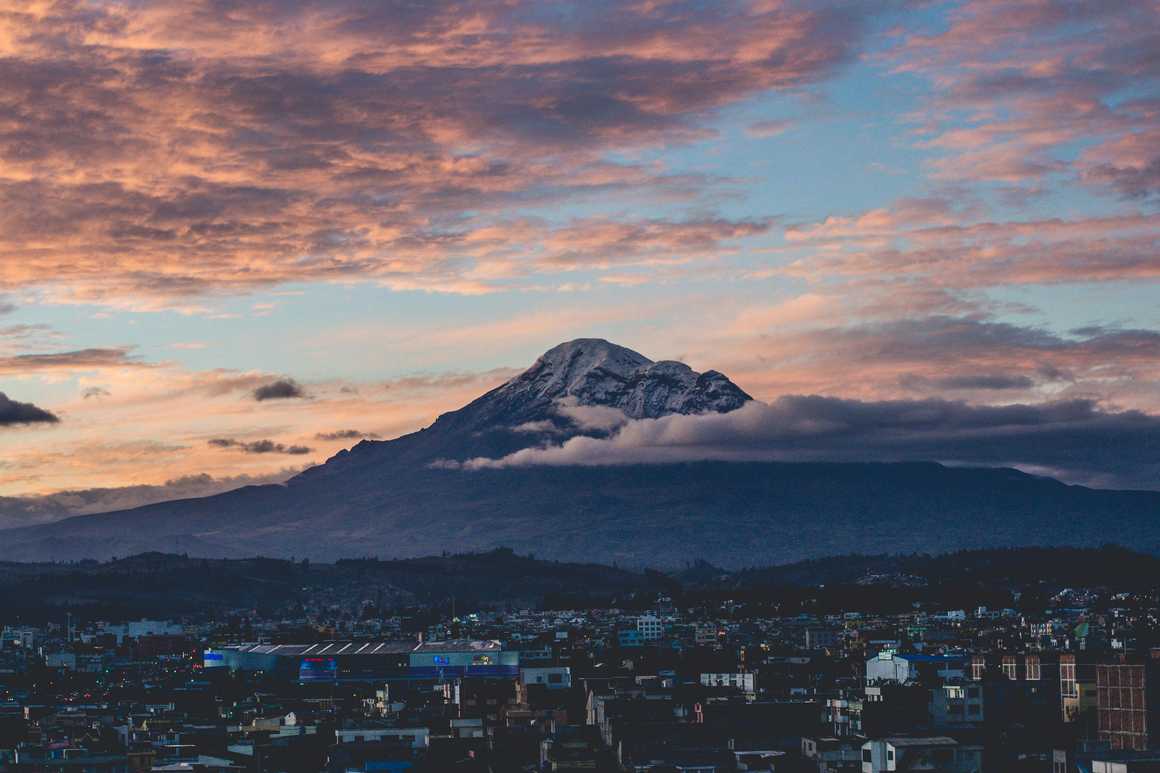
What is the population of Ecuador?
Ecuador is home to about 18 million people as of 2025, and its population has steadily grown since the mid 20th century. Most of Ecuador’s population lives in the urban centres of Quito, the vibrant capital, high in the Andes, and Guayaquil, the country’s largest coastal port city, where you’ll find the densest populations. The Amazon rainforest and the Galápagos Islands remain sparsely populated and contain protected areas. Some urban areas have experienced a strain on infrastructure and public services in more recent decades - the result of large numbers of the population in Ecuador migrating from rural areas for increased employment opportunities.
What languages are spoken in Ecuador?
Spanish is the main language in Ecuador, which you’ll hear just about everywhere, due to its introduction during Spanish colonisation in the 1500s. However, pre-dating colonialism, indigenous languages such as Quechua and Shuar were the most widely used in Ecuador. Today, you’ll still find Quechua and other native languages spoken, especially in rural and Amazonian areas. They are officially recognised and celebrated, honouring the country’s deep cultural roots and mix of traditions.
What is Ecuador’s currency?
In 2000, Ecuador shifted its currency from the sucre to the US dollar, which is still used today. This shift helped stabilise Ecuador currency and economy, saving them from a financial crisis. Although the US dollar is its official currency, Ecuador still produces its own smaller coins (centavos), which are equivalent to the cents in US dollars. These coins are used alongside US coins in everyday transactions and have Ecuadorian designs.
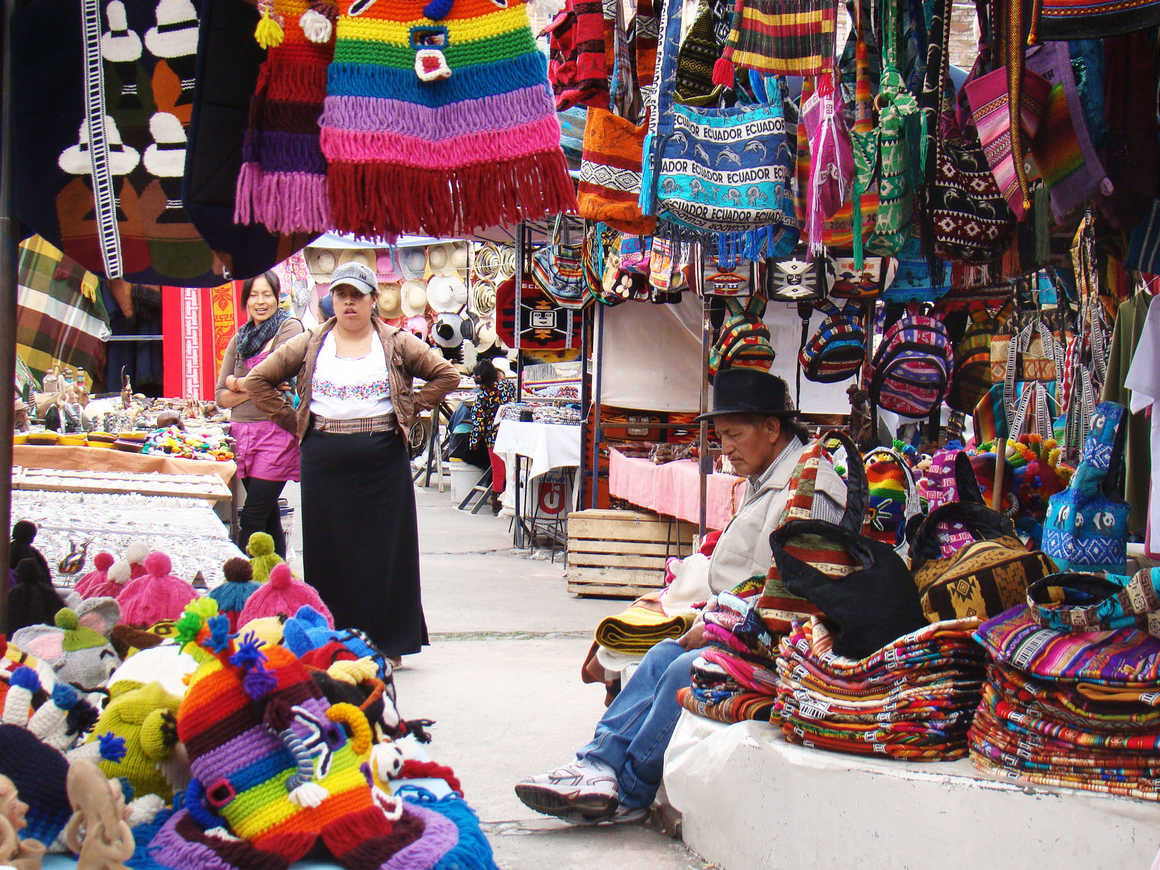
What is the time in Ecuador now?
A question often asked by loved ones of those travelling in Ecuador! Time zones in Ecuador are separated because of the Galápagos Islands. Ecuador has its own time zone - ECT, and is UTC-5, the Galápagos Islands use a separate time zone: Galápagos Time (GALT), which is UTC-6. But, as Ecuador does not observe daylight saving time, the time difference varies for people from the UK or the US, depending on what time of the year they travel there. This is easily worked out by adding an hour onto the times above between the end of March and the end of October.
What is the weather in Ecuador like?
Ecuador weather is wonderfully varied thanks to its diverse landscapes and location on the equator, and instead of four seasons, it has wet and dry periods. Those wondering about the best time to visit Ecuador, and whether they’ll get caught in a wet season needn’t worry - rain often comes in intense, short downpours rather than lasting for days on end, especially on the coast and Amazon regions. In those areas, you can expect hot and humid year-round temperatures, averaging 23–31°C (73–88°F), although you’ll find more of a breeze on the coast in towns such as Guayaquil. Up in the Andes, cities like Quito are cooler, with spring-like weather all year-round - think 10°C (50°F) at night and 20°C (68°F) by day. The Galápagos Islands have a different climate again and are warm and breezy, ranging from 19°C to 31°C (66–88°F) depending on the time of year. Global warming is causing the climate in Ecuador to change though, bringing more unpredictable rain and longer dry spells, especially in rural and coastal regions.
Top 3 things to do in Ecuador
Sigh. How to condense what to do in Ecuador to 3 options. Trust us, this beautiful country has SO much to offer and this is a blog in itself - but for the sake of a rounded perspective (and saving another 1000 words!), we’ve grouped some items to allow for further exploration, should your heart desire…
Volcanoes
The volcanoes of Ecuador are infamous and unmissable for hiking and outdoors enthusiasts. The Avenue of Volcanoes in Ecuador (named in the early 1800s by famous explorer Humboldt) stretches between Quito and Cuenca. In this stunning region you can embark on epic hikes around active volcanoes such as Cotopaxi and Chimborazo (the closest point on Earth to the sun!), Quilotoa lake, with its rugged trails and stunning turquoise water, and even Kichwa villages - Ecuador’s indigenous communities. Camp, climb and mountain bike your way through the magnificent Andean landscapes, we promise you won’t be disappointed.
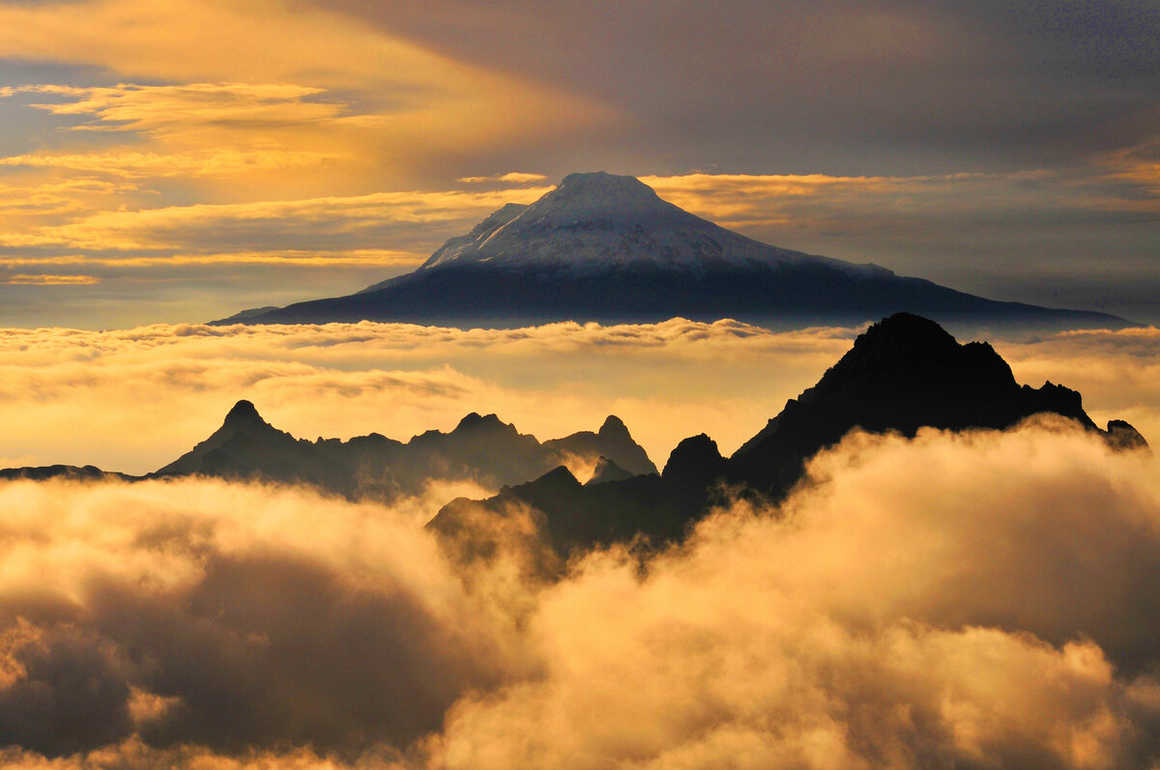
Cities, towns, culture and food
We already mentioned Quito and Cuenca above, but well deserving of their own section, the cities and towns of Ecuador are cultural cornucopias, and have something for everyone, from foodies to history buffs.
Quito
The aforementioned UNESCO World Heritage Site is full of Spanish-influenced architecture, including the gilded churches of Iglesia de la Compañía de Jesús, Iglesia Convento de San Francisco and Catedral Metropolitana. Be sure to see La Plaza Grande - Quito's historic main square, dating back to the 16th century.
Cuenca
Nicknamed “The Athens of Ecuador”, Cuenca is another UNESCO World Heritage Site, and its centre is beautifully preserved. Its name is a nod to its cultural heritage, beautiful architecture, and significant contributions to Ecuadorian arts, sciences, and literature. Wander through plentiful local artisan shops and markets, museums and the ever popular blue domed, new cathedral. Its surroundings are a scenic feast - dramatic highlands, Incan sites, and local craft villages are but a stone's throw.
Guayaquil
For a different vibe, Guayaquil is Ecuador’s economic capital and largest city. Think coastal, lively, and modern with tropical heat. Don’t miss Malecón 2000 - a lovely riverside promenade with gardens, restaurants, monuments, museums, and even a Ferris wheel, or Las Peñas - a 444-step climb up to Cerro Santa Ana for panoramic city views plus a colorful hillside neighborhood with cobbled streets and colonial houses turned into art galleries, cafes and bars.
Food
No trip to Ecuador would be complete without trying some of their local gastronomic specialities. With its huge coastline, fresh seafood is abundant. Try ceviche de camarón (shrimp ceviche), encocados (seafood in coconut sauce), or crispy corviche (green plantain and fish fritters. Pork is also a popular choice with dishes like hornado (slow-roasted pork) and fritada (fried pork) often on the menu, particularly at street vendors. Other popular street foods from Ecuador worth sampling are the murados con quesos - ripe baked plantains stuffed with cheese, empanadas de viento - melted cheese with onions in crunchy fried dough sprinkled with sugar or the very moreish espumillas - meringue cream desserts, served in ice cream cones. Is your mouth watering yet?
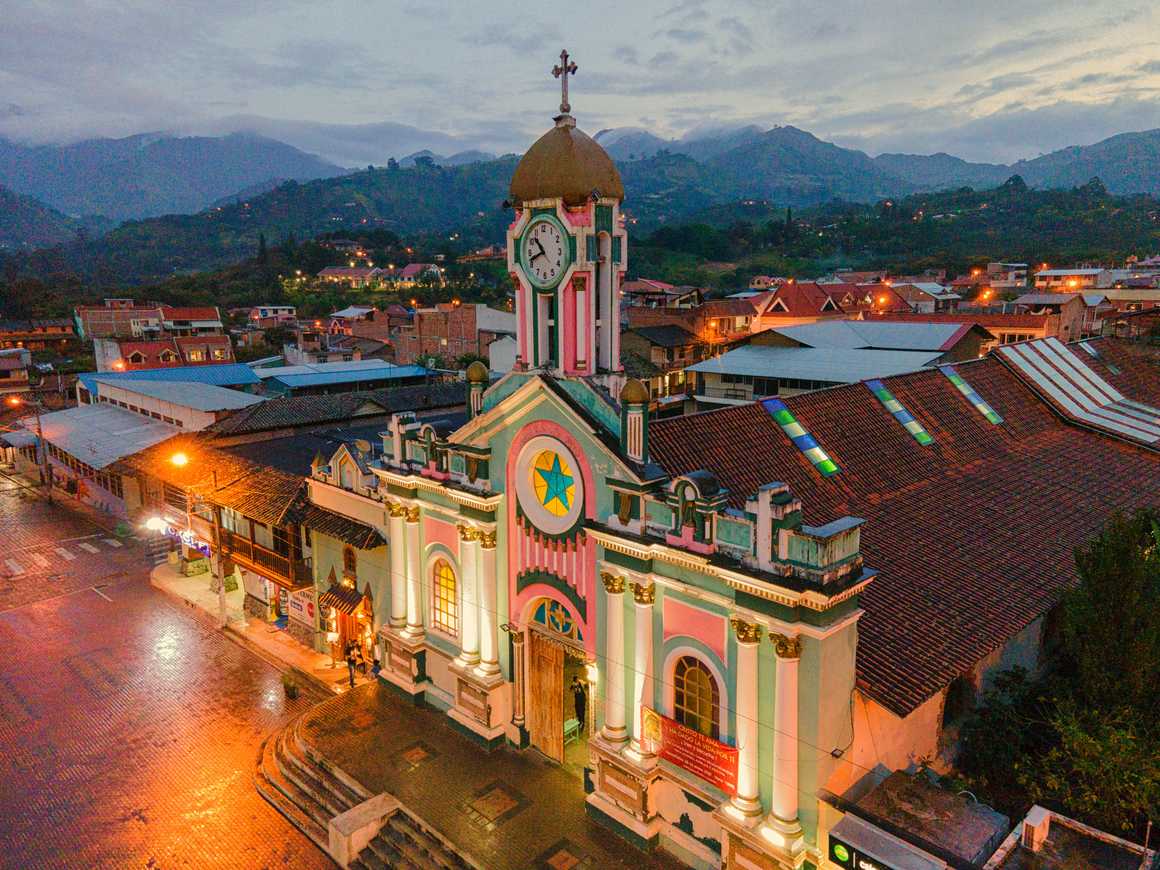
The Amazon Rainforest
For a real off-grid adventure, there’s no better place than Ecuador’s Amazon Basin. Leave reality behind by paddling through jungle rivers in a canoe and hiking into remote reserves like Cuyabeno. With protected and abundant wildlife, the biodiversity that thrives in this lush, untainted ecosystem makes for an unforgettable way to experience Ecuador’s natural world. Make time in your itinerary to learn about indigenous communities and their traditions by visiting local villages and staying in eco-tourist lodges in Ecuador’s Amazon Rainforest for an immersive, sustainable experience.
Is it safe to travel in Ecuador?
When travelling to Ecuador (or anywhere culturally different), staying safe will likely be on your mind. However, Ecuador is known for being generally safe, especially in popular tourist areas like Quito, Cuenca, the Galápagos, and the Amazon lodges. Like in many countries, petty theft can happen - particularly in crowded tourist spots - so be vigilant with your belongings. Some areas of the bigger cities may feel less safe at night, but that’s true for many Western cities too, so as you would do anywhere unfamiliar, use your common sense and stick to well trodden routes. We know you’ll find Ecuador to be a warm and welcoming destination.
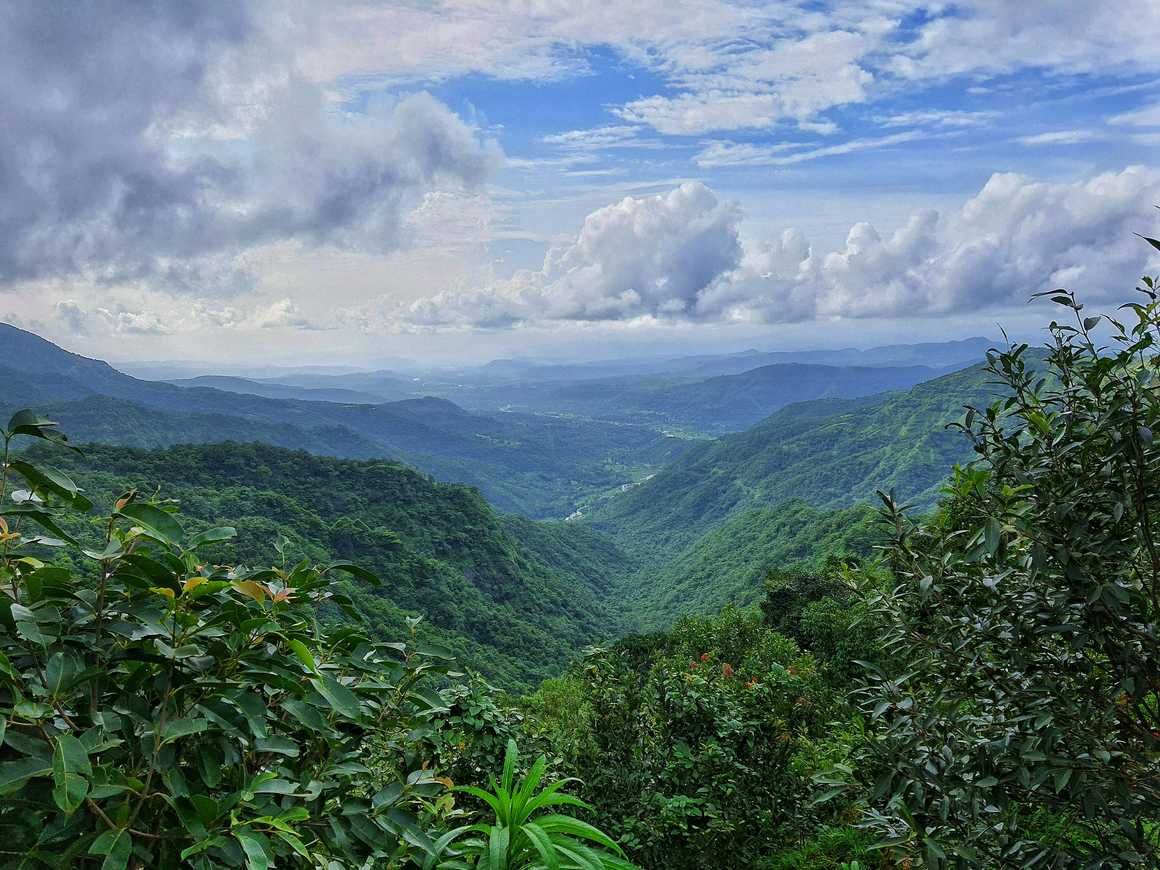
Treks in Ecuador with Kandoo
We hope you’ve enjoyed reading some of our fascinating facts about Ecuador. If Ecuador has piqued the adventurer in you and you are looking for an epic globetrotting experience, stop the search. Travel to Ecuador and find some of the world's highest volcanoes, untainted rainforest and protected sea life - in fact, we don’t know what more you could want from adventure travel! Ecuador has it all. Kandoo are here to help with that too - check out our trips to Ecuador for inspiration, and when you’re ready, get in touch for anything you need to know, from additional Ecuador travel advice to ways to book and pay. Happy travels!
